For my next project
This week: Weather watch; In flower in September; My next project;
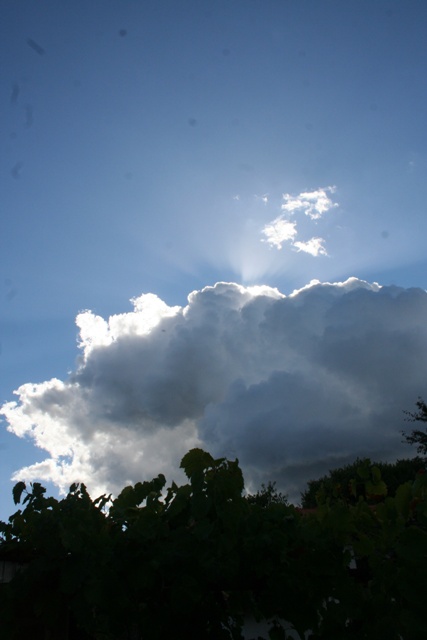
Crepuscular suns rays, streaming through gaps in cloud are parallel columns of sunlit air, separated by layers of cloud. The rays appear to diverge, like railway lines, because of the effect of perspective.
Airborne dust, inorganic salts, aerosols, small water droplets and air molecules scatter the sunlight and make the rays visible.
We had a little rain overnight Monday into Tuesday, just 6.5 mm. It has made the ground more workable, but really has done little to improve the soil moisture content.
This week’s temperatures have noticeably dropped, showing we are over the peak summer heat. With the average temperature for the last week of August showing a slight drop.

It is still over 32ºC during the day, but the night time and early morning temperatures are pleasantly cool. It makes working outside pleasant, especially before the air warms enough to allow the Tiger mosquitoes to start flying.
What is noticeable is the state of the olives in the groves around my home. Many trees have no olives on them. On others the fruits which are present have shrivelled and turned black.
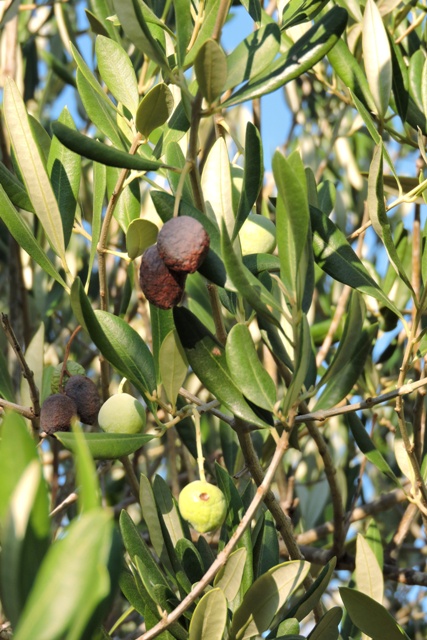
A look at the precipitation graph for the summer months shows that the amount of rain we have received between May and the last week of August, is about on the average.
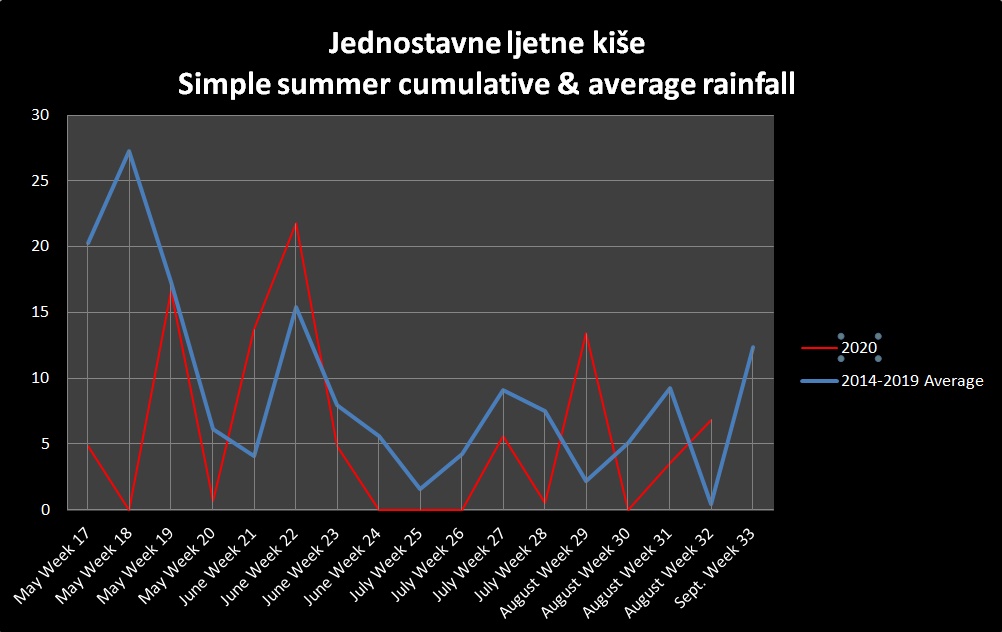
The problem is that the average is 250 mm, or 250 litres per square meter down on the annual average, because in the early part of this year we received so little precipitation.

This lack of rain, at the key time when the Olive trees were in blossom and the fruit were forming translates into the bare trees I see every day.
Weather watch
Sunday is a day of rest, except when there are jobs to do!
One of the first things I do on a Sunday morning is to look at the weather forecast for the next week. This is so I can plan what I need to do, and when it might be achievable.
Pop-up thunderstorms can happen at any time of the year. These are storms created because of local conditions rather than because of a weather front. There was still convective activity forecast for Monday, although it looked as though it may be late afternoon or evening, rather than during the early part of the day.
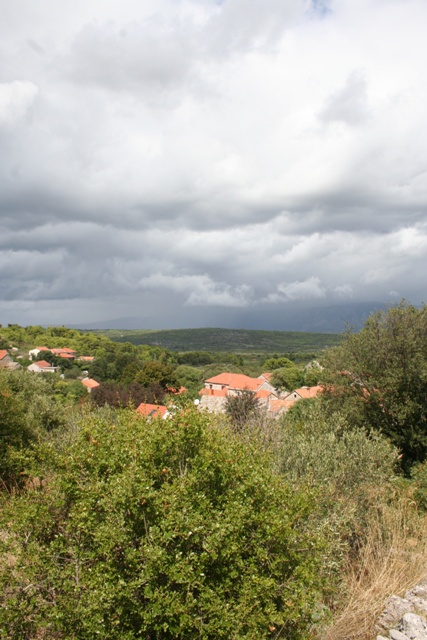
A rain storm passed by to the north on Monday without so much as a single drop of rain in Dol. (The rain actually started around dusk)
I was out at 07:00 on Sunday morning, with a paintbrush in hand, slapping the first coats of white undercoat onto the newly fitted plywood shelves of the Stevenson Screen.
I’d worked out that if I could get two coats of undercoat onto the structure on Sunday, to be finished with a gloss top coat on Monday, it would make the woodwork weatherproof.
Working in the early morning, when there is a cool breeze and the sun has not risen high enough to heat the orchard is lovely. By just after 9 am, I had the first coat finished, leaving it to dry.
I can comfortably manage two coats of undercoat in a day at this time of year – unlike in winter. What I did discover was that painting with a coat of gloss paint in the afternoon was not a good idea.
This is because by the later afternoon, every flying bug known to mankind is airborne and is attracted to the new paint. I’ll not make that mistake again!
When I checked the screen on Tuesday morning, the overnight rain had run off the new paint and hadn’t left any marks. The system works!
In flower in September
Last October I planted some Autumn Crocus, Colchicum autumnale, as a speculative venture because they really are northern latitude bulbs.
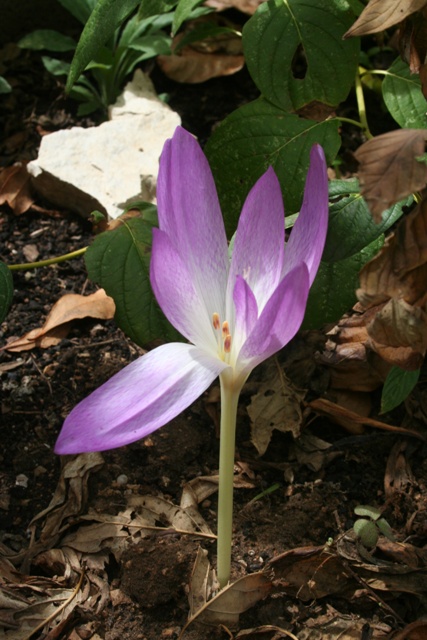
Early in the week the first had come through, then on Friday the main clump has started to flower.
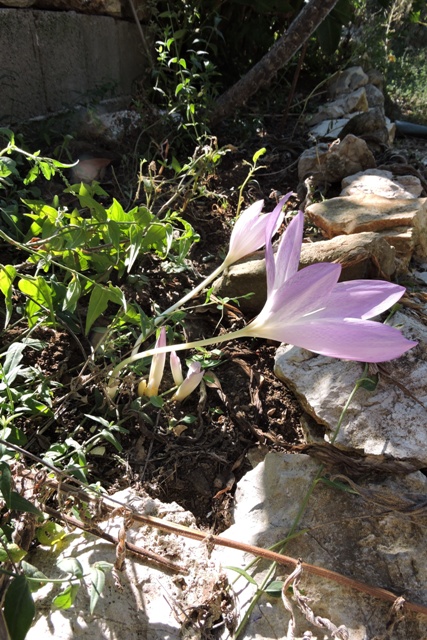
So I at least know they have survived the summer and have not been attacked by shrews or field mice. It would be nice if over time they multiply and grow into large clumps.
I planted them in the shade of some shrubs, alongside the path down into the Top Orchard. There is a magenta coloured variety which if I can find some bulbs, I will try too.
In the Mediterranean the citrus trees are known for having flowers, juvenile and mature fruit, all on the tree at the same time. But it also applies to other fruiting plants, like my Goji Berries, Lycium chinense.

This week the tiny mauve flowers are out and as I walk past, their scent wafts along on the breeze.
When I looked into the bushes, there are a number of berries ripening too.

These are described by some writers as “super fruits“, as they are full of antioxidants, vitamins, protein and fibre and low in calories.
Being small, they are difficult to harvest in any meaningful quantity, at least from the three bushes that I have. That doesn’t stop me trying though.
I have Rhubarb growing under an old Mandarin tree in the citrus orchard. Although it is irrigated, because the soil is so dry and poor, I empty washing up bowl water onto the area around the tree, when ever I have a suitable bowl full.
This keeps the area around the tree moist when the rest of the orchard is parched.
Because of the dampness, I planted some Morning Glory seeds (Ipomea) in this area when I first moved into my home. Now the plants self seed and twine their way up the trunk of the old tree and into the branches.

At this time of year, as the name suggests, in the morning there is an abundance of flowers along the length of the trunk.
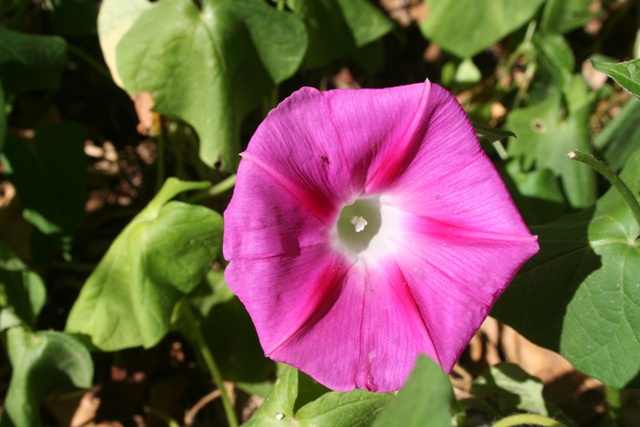
By lunch time they are starting to close and by evening they have died. More buds are showing and these will open the next day.
Morning Glory will flower until the first cold days of winter, which here is December.
Once the plants are dead, I will pull the dead vines out of the tree, which spreads seeds that will become next years flowers.
I did try to get some growing in the wall along the old donkey track, however it is just too dry.
The track and dry stone wall bake in the summer sun and heat for 12 hours a day, and only a very limited amount of rain water means even this plant is unable to survive there.
I have a potted Callistemon in flower.
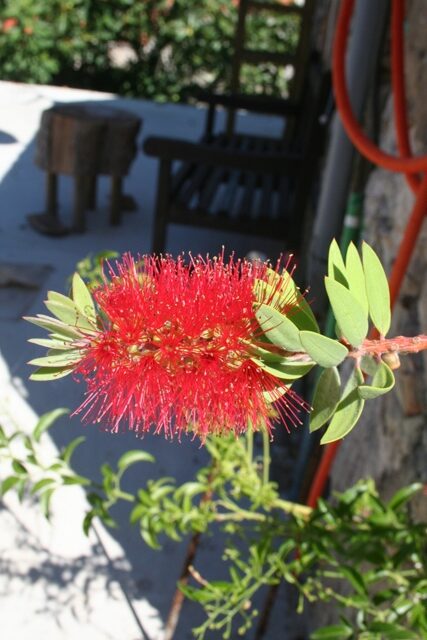
It has just started flowering again and will continue until the first cold nights of winter. My Alstomeria have more flowers this summer than they have ever had before.
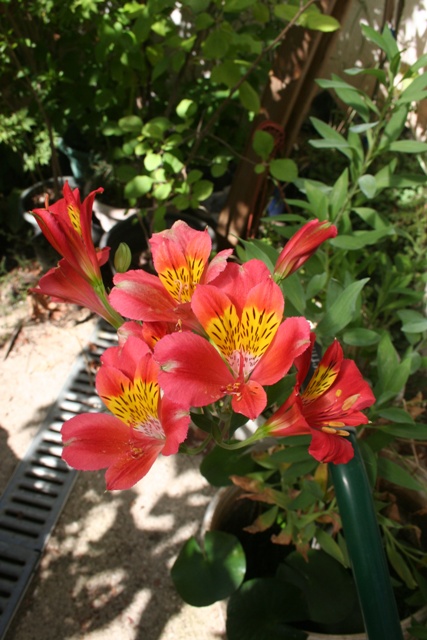
My next project
I have started again to move the large, heavy stones that were put “out of the way” by the side of the path down to the top orchard.

I’m going to need this area for soil I have to move to level the fold yard, but before I can start to move any soil, I need to clear away the stones.
This has been one of those jobs I have been going to start for a while, but in the heat of full summer I just didn’t have the energy.
The first task was to cut up some wood that I have been storing there, ready for burning on the wood stove this winter. I moved it straight to the covered kitchen store so it is ready for when I need to light the stove.
With the wood gone, I could see all the stones and quickly moved the smaller ones, putting them safely out of the way.
With restricted space in the fold yard, and not wanting to move the stones too far away from where I will need them, I loaded them one at a time onto the sack barrow.
I then hauled the barrow up a short slope and offloaded the stones, but still leaving enough space to get through with the barrow.
This project is about getting ready for the paving sets to be laid in the courtyard and extending them as a path around the new workshop.
There were eight of the largest stones left, all weighing over 250 kgs and a couple weighing substantially more. These are more than the maximum weight that the sack barrow can safely accommodate so for now I have left them in place.
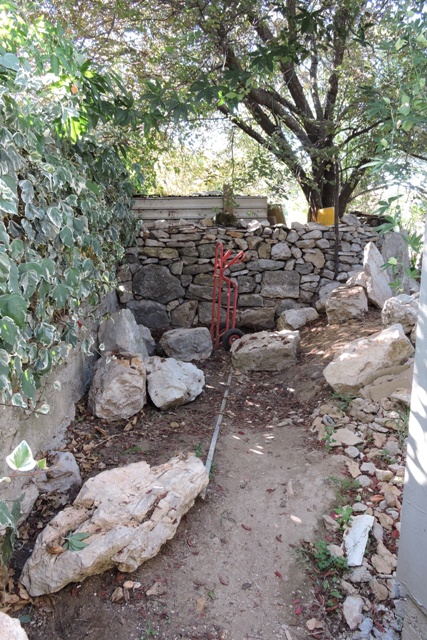
Looking back, I wonder how I ever managed to get them out of the old buildings as I dismantled them and then moved the stones into this area in the first place.
I now have enough space to start digging out the soil and moving it around, lifting this area of the old yard. Then I’ll roll the stones back, so they are out of the way.
It’s just another job for next week. NRC
2 Responses
John Bailey
Found the Autumn Crocus interesting Norman. They were amongst a batch of mixed bulbs I set. Whey came up last month I had no idea what they were. You have enlightened me. I did think they were part of the Crocus family. Let’s hope they multiply.
Andy Robinson
Surprised you have not fabricated a motorised stone mover out of an old m/cycle frame.. That could be a winter project for you….. Or hire a bobcat!